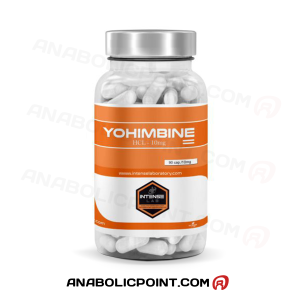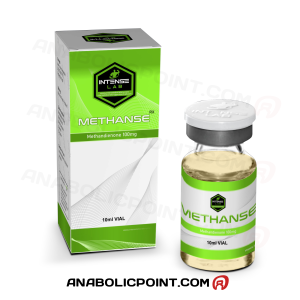Your basket is currently empty!
Steroid Smuggling and International Drug Rings: A Global Epidemic of Illicit Trade
The illegal trafficking of anabolic steroids has grown into a significant and complex issue, fueled by the intersection of black-market demand, organized crime, and limited regulatory enforcement. Steroid smuggling and international drug rings not only undermine health and safety but also highlight global vulnerabilities in controlling the illicit drug trade.
This article explores the intricate web of steroid smuggling, examining the methods, networks, risks, and socio-economic consequences of this underground industry. We’ll also discuss how law enforcement agencies are tackling this ever-evolving problem.
The Scope of Steroid Smuggling
Steroid smuggling has become a global concern, with products originating from countries like China, India, and Eastern Europe, where manufacturing costs are low, and regulation is weak. These steroids are then smuggled into countries with high demand, such as the United States, Canada, and Australia.
The black market for steroids caters to a wide audience, including athletes, bodybuilders, and even casual gym-goers seeking physical enhancement. The demand for quick results, coupled with limited access to legal alternatives, drives many to seek illicit channels.
How Steroid Smuggling Works
Smugglers and international drug rings rely on a variety of methods to move anabolic steroids across borders:
- Small-Scale Operations: Individuals purchase steroids online and have them shipped in disguised packages.
- Organized Networks: Drug rings utilize intricate supply chains, including fake pharmaceutical companies, to produce and distribute steroids.
- Diversion from Legal Sources: Some smugglers obtain steroids intended for medical use and divert them to the black market.
This smuggling often involves the use of digital currencies, encrypted communications, and fake documentation, making it difficult for authorities to track and intercept shipments.
The Role of International Drug Rings
Organized crime groups have played a pivotal role in steroid smuggling, leveraging their networks to facilitate production, distribution, and sale. These groups often operate across multiple countries, exploiting weak regulatory frameworks and porous borders.
Production Hubs
Countries with lax pharmaceutical regulations, such as China and India, serve as major hubs for steroid production. These regions produce raw materials and finished products, which are then shipped globally.
Distribution Channels
Steroids are transported through shipping containers, international mail, and even human couriers. Once smuggled into a destination country, the drugs are distributed through underground gyms, fitness clubs, and online marketplaces.
Digital Transformation
The rise of the dark web and encrypted communication platforms has revolutionized how drug rings operate. Sellers can anonymously connect with buyers, receive payments via cryptocurrencies, and evade detection by law enforcement.
Health Risks Associated with Smuggled Steroids
Smuggled steroids pose significant health risks due to their unregulated nature. Without oversight, these drugs may:
- Contain Contaminants: Counterfeit products often include harmful substances or incorrect dosages.
- Lack Sterility: Poor manufacturing practices can lead to infections or other complications.
- Be Mislabelled: Users may unknowingly consume substances with dangerous side effects.
The unregulated nature of black-market steroids also makes it difficult for users to determine safe dosages, increasing the likelihood of overdoses and adverse reactions.
Legal and Ethical Challenges
Weak Regulatory Frameworks
One of the biggest challenges in combating steroid smuggling is the disparity in regulations across countries. While some nations impose strict controls on steroid production and distribution, others have limited oversight, creating opportunities for exploitation.
Law Enforcement Limitations
Tracking steroid smuggling is particularly challenging due to the sheer volume of international trade. Smugglers use sophisticated methods to disguise their shipments, including mislabeling and concealment in legitimate goods.
Ethical Concerns
Steroid smuggling not only undermines public health but also perpetuates unfair advantages in competitive sports. Athletes who use illicit steroids compromise the integrity of sports, prompting stricter anti-doping measures.
Economic Impact of Steroid Smuggling
The black market for steroids generates billions of dollars annually, diverting resources from legitimate pharmaceutical industries and healthcare systems. This underground economy also fuels organized crime, funding other illicit activities such as drug trafficking, human trafficking, and arms smuggling.
Governments lose potential tax revenue, and healthcare systems bear the burden of treating individuals who suffer complications from unregulated steroid use.
How Authorities Are Combating Steroid Smuggling
International Cooperation
Efforts to combat steroid smuggling often require collaboration between countries. Agencies such as Interpol and the United Nations Office on Drugs and Crime (UNODC) facilitate information sharing and coordinated operations to disrupt drug rings.
Advanced Detection Techniques
Customs and border patrols use advanced technologies like X-ray scanners, chemical detection kits, and data analytics to identify suspicious shipments.
Targeting Online Markets
Law enforcement agencies are increasingly targeting dark web marketplaces where steroids are sold. Operations such as “Operation Cyber Juice” in the U.S. have dismantled online steroid distribution networks.
Public Awareness Campaigns
Raising awareness about the risks of smuggled steroids can help reduce demand. Educational initiatives targeting athletes and fitness enthusiasts emphasize the dangers of using unregulated substances.
Steroid Smuggling in Sports
The connection between steroid smuggling and sports is well-documented. High-profile cases of doping scandals have revealed the extent to which athletes rely on black-market steroids to gain a competitive edge.
While anti-doping agencies have made significant progress in detecting and penalizing steroid use, smuggling operations continue to undermine these efforts. Athletes often turn to underground suppliers to avoid detection, perpetuating the cycle of demand and supply.
Future Challenges and Trends
The fight against steroid smuggling faces several emerging challenges:
- Innovation in Smuggling Techniques: Smugglers are continually adapting their methods, making it difficult for authorities to keep up.
- Proliferation of New Steroids: The development of new anabolic compounds complicates detection and regulation.
- Globalization of Supply Chains: As international trade becomes more interconnected, monitoring and controlling steroid smuggling becomes increasingly complex.
Advances in technology, however, also offer new opportunities to combat smuggling. AI-driven analytics, blockchain-based tracking, and biometric identification could enhance enforcement efforts.
Common Questions About Steroid Smuggling and Drug Rings
- What are the main sources of smuggled steroids?
Countries like China, India, and Eastern Europe are major sources due to low production costs and weak regulations. - How are steroids smuggled across borders?
Steroids are smuggled via international mail, shipping containers, and human couriers, often disguised as other products. - Why is steroid smuggling a global problem?
It undermines public health, fuels organized crime, and creates unfair advantages in sports. - What are the risks of using smuggled steroids?
Users face risks such as contaminated products, infections, and incorrect dosages, leading to severe health issues. - How do drug rings facilitate steroid smuggling?
Organized crime groups manage production, distribution, and sales using sophisticated networks and digital platforms. - What role does the dark web play in steroid smuggling?
The dark web enables anonymous transactions, connecting buyers and sellers while evading law enforcement. - What are authorities doing to combat steroid smuggling?
Efforts include international cooperation, advanced detection methods, and targeting online marketplaces. - Why are steroids smuggled despite legal alternatives?
High demand for quick results and restricted access to legal steroids drive the black market. - How does steroid smuggling affect sports?
It enables doping, undermining the integrity of sports and prompting stricter anti-doping measures. - What is the future of steroid smuggling enforcement?
Advances in technology and global cooperation will play a crucial role in tackling this evolving problem.
A Global Fight Against Illicit Trade
Steroid smuggling and international drug rings represent a multifaceted challenge that spans public health, law enforcement, and ethics. While significant strides have been made in combating this issue, the fight is far from over.
A comprehensive approach that includes stricter regulations, advanced technologies, and public education is essential to dismantle these networks and reduce the demand for black-market steroids. As the world grapples with this pervasive problem, continued vigilance and collaboration will be key to turning the tide.













